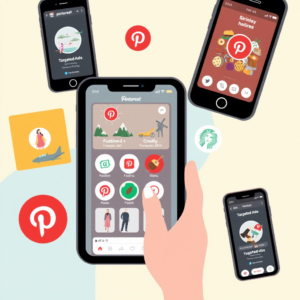In today’s fast-paced digital world, simply running ads isn’t enough — you need to run the right ads.
If you’re looking to grow your business, generate quality leads, and convert those leads into loyal customers, your ad campaigns need a clear, strategic structure. But where do you start?
In this article, we’ll walk you through a step-by-step framework to create high-performing ad campaigns that not only grab attention but also deliver real results. Whether you’re new to digital marketing or looking to refine your existing strategy, this guide will give you the tools to make your ad campaigns more effective, efficient, and profitable.
From defining your audience to crafting compelling messages and optimizing for conversions, we’ll cover everything you need to know to structure ad campaigns that work. Let’s dive in.
1. Define Your Target Audience with Precision
Before you even think about launching an ad campaign, you need to know your audience — inside and out.
Why is this so important? Because if you don’t know who you’re speaking to, how can you expect your message to resonate?
Start by creating detailed buyer personas . These are semi-fictional representations of your ideal customers based on real data and insights. Think about factors like:
- Age and location
- Job title and industry
- Pain points and challenges
- Goals and aspirations
- Buying behavior and decision-making process
For example, if you’re promoting a project management tool for small businesses, your ideal customer might be a 35-year-old marketing manager in New York who’s struggling to keep her team organized and on track.
Once you have a clear picture of your audience, you can tailor your messaging, ad placements, and content to meet their specific needs.
Pro Tip: Use tools like Google Analytics, Facebook Audience Insights, or LinkedIn Analytics to gather real-time data about your current audience and refine your targeting.
By ligning your campaign with the right audience from the start, you’re setting the stage for better engagement, higher click-through rates, and more qualified leads.
2. Set Clear, Measurable Goals for Your Campaign
You wouldn’t start a road trip without knowing your destination — and the same goes for your ad campaigns.
Before launching any campaign, it’s crucial to define what success looks like. What are you trying to achieve?
Common lead generation goals include:
- Increasing website traffic
- Growing your email list
- Driving sign-ups or demo requests
- Boosting webinar attendance
- Generating sales-qualified leads
Once you’ve identified your goal, break it down into measurable KPIs (Key Performance Indicators). For instance, if your goal is to grow your email list, your KPIs might include:
- Number of new subscribers per week
- Conversion rate from ad click to email signup
- Cost per lead (CPL)
Having clear goals allows you to track your progress, optimize your strategy,- and make data-driven decisions that improve performance over time.
Remember: Your campaign goal should always align with your broader business objectives. If you’re a B2B SaaS company, for example, your focus might be on demo requests rather than general website traffic.
By setting clear, actionable goals, you’ll not only keep your campaign focused — you’ll also be able to prove its value to stakeholders.
3. Craft Compelling Ad Copy That Converts
You’ve got the right audience and clear goals — now it’s time to speak directly to them with powerful ad copy .
Your ad copy is the bridge between your campaign and your audience. It needs to be attention-grabbing, persuasive, and action-oriented.
Here’s how to create copy that converts:
Start with a Strong Headline
Your headline is the first thing people see — make it count. Use power words like “free,” “instant,” “exclusive,” or “limited” to create urgency or curiosity.
Example:
“Get 50 Free Templates to Boost Your Productivity Today!”
Focus on Benefits, Not Just Features
People don’t buy features — they buy the results those features deliver. Instead of saying “Our tool has real-time analytics,” say “See how your marketing campaigns are performing — in real time.”
Include a Clear Call to Action (CTA)
Tell your audience exactly what you want them to do. Use action verbs like “Download,” “Sign Up,” “Join Now,” or “Get Started.”
Example:
“Download Your Free Marketing Plan Template Now!”
Keep It Simple and Scannable
Most people don’t read every word — they skim. Use short sentences, bullet points, and bold key phrases to highlight value.
Bonus Tip: A/B test different versions of your headlines, CTAs, and copy to see what resonates best with your audience.
When your ad copy speaks directly to your audience’s needs and guides them toward a clear next step, you’ll see a significant boost in conversions and lead quality.
4. Choose the Right Platforms and Ad Formats
Not all platforms are created equal — and where you run your ads matters just as much as what they say.
Each platform has its own audience, ad formats, and best practices. Here’s a quick breakdown of the most popular options:
Google Ads (Search and Display)
- Best for: Intent-based traffic and direct conversions
- Use when: People are actively searching for solutions
- Formats: Search ads, display ads, shopping ads
Facebook & Instagram Ads
- Best for: Visual storytelling and audience targeting
- Use when: You want to build brand awareness or retarget warm leads
- Formats: Carousel ads, video ads, lead ads
LinkedIn Ads
- Best for: B2B marketing and professional audiences
- Use when: Targeting decision-makers and professionals
- Formats: Sponsored content, InMail, text ads
YouTube Ads
- Best for: Brand storytelling and video engagement
- Use when: You want to build trust and awareness
- Formats: Skippable and non-skippable video ads
TikTok & Snapchat Ads
- Best for: Reaching younger audiences with short-form, engaging video
- Use when: You want to go viral or build a trendy brand image
- Formats: In-feed video, branded lenses, challenges
Once you’ve selected your platform, choose the ad format that best suits your message and audience. For example, a lead generation campaign might use Facebook Lead Ads, while a product launch could benefit from a carousel ad on Instagram.
Pro Tip: Don’t spread yourself too thin. Start with 1-2 platforms where your audience already spends time, and scale from there.
By choosing the right platform and format, you’ll ensure your message reaches the right people — in the right place — at the right time.
5. Optimize for Conversions with Landing Pages and CTAs
You’ve captured attention with your ad — now it’s time to convert that interest into action .
Your landing page is where the magic happens. If your ad is the invitation, your landing page is the party.
Here’s how to build a high-converting landing page:
Keep It Focused
Every landing page should have one primary goal — whether it’s signing up for a newsletter, downloading a resource, or booking a call. Avoid distractions like navigation menus or unrelated links.
Match the Ad Message
Your landing page should feel like a natural continuation of your ad. If your ad promises a free guide, make sure that guide is front and center on the page.
Use a Strong Value Proposition
Tell visitors exactly what they’ll get and why it matters. Use bullet points, testimonials, and visuals to reinforce your offer.
Make the CTA Stand Out
Your call to action should be easy to find and hard to resist. Use contrasting colors, bold fonts, and action-oriented language.
Example:
Download Your Free SEO Checklist Now!
Include Trust Elements
Add social proof like customer testimonials, trust badges, or logos of clients or media outlets you’ve worked with.
Optimize for Mobile
More than 60% of digital media is consumed on mobile devices. Make sure your landing page loads quickly and looks great on all screen sizes.
Pro Tip: Use tools like Google PageSpeed Insights or Hotjar to test your landing page performance and user behavior.
By aligning your ad message with a clear, compelling landing page, you’ll dramatically increase your chances of turning clicks into real leads.
6. Track, Measure, and Optimize Your Campaigns
You’ve launched your campaign — but the work doesn’t stop there.
To ensure long-term success, you need to track performance , analyze data, and continuously optimize your strategy.
Here’s how to do it:
Set Up Conversion Tracking
Use tools like Facebook Pixel, Google Analytics, or UTM parameters to track user behavior and see what’s working — and what’s not.
Monitor Key Metrics
Keep an eye on metrics like:
- Click-through rate (CTR)
- Conversion rate
- Cost per lead (CPL)
- Return on ad spend (ROAS)
Identify What’s Working (and What’s Not)
If one ad group is performing significantly better than others, dig into why. Is it the copy? The audience? The creative?
Test and Iterate
Run A/B tests on different headlines, images, CTAs, and audiences. Small changes can lead to big improvements.
Scale What Works
Once you find a winning formula, increase your budget and expand your reach.
Pause or Adjust Poor Performers
Don’t throw good money after bad. If an ad isn’t converting, pause it and try something new.
Pro Tip: Review your campaign performance weekly or bi-weekly to stay on top of trends and opportunities.
By continuously measuring and optimizing your campaigns, you’ll not only improve your results — you’ll also get a better return on your advertising investment.
7. Retarget and Nurture Your Leads
Not every lead will convert on the first interaction — and that’s okay.
In fact, most people need to see your brand multiple times before they take action. That’s where retargeting and lead nurturing come in.
Retargeting: Bring Them Back
Retargeting allows you to show ads to people who have already interacted with your brand — like visiting your website or clicking on an ad.
- Use Facebook or Google retargeting pixels to serve personalized ads
- Offer a special incentive or reminder to encourage action
- Segment your retargeting audiences based on behavior
Example:
“Hey [Name], forgot something? Finish your free download!”
Lead Nurturing: Build Relationships
Once someone becomes a lead — whether they signed up for your newsletter, downloaded a resource, or requested a demo — it’s time to keep the conversation going .
Use email marketing, social media, or chatbots to:
- Share valuable content
- Answer questions
- Provide helpful resources
- Encourage next steps
The goal is to build trust and guide them closer to a purchase decision.
Pro Tip: Create a lead nurturing sequence that sends personalized emails based on user behavior, like downloading a whitepaper or attending a webinar.
By combining retargeting and lead nurturing, you’ll maximize the value of every lead — and turn more casual visitors into paying customers.
8. Leverage Automation to Save Time and Boost Results
Running high-performing ad campaigns doesn’t mean doing everything manually.
In fact, marketing automation can help you save time, improve targeting, and scale your efforts more efficiently.
Here’s how:
Automated Ad Optimization
Use smart bidding strategies in Google Ads or Facebook Ads Manager to automatically adjust bids based on performance.
Email Drip Campaigns
Create automated email sequences that send targeted messages based on user actions — like downloading a lead magnet or abandoning a cart.
Chatbots for Lead Capture
Use tools like Drift, ManyChat, or Intercom to engage visitors in real time and qualify leads instantly.
CRM Integration
Sync your ad platforms with your CRM (like HubSpot or Salesforce) to track lead behavior and sales outcomes.
Audience Segmentation
Automatically segment your audience based on demographics, behavior, or engagement level — and deliver personalized messages.
Pro Tip: Start small with one or two automation tools, then expand as your campaigns grow.
Automation isn’t about replacing human effort — it’s about enhancing it. When used correctly, it can help you run smarter, more scalable campaigns that deliver better results.
9. Stay Updated with Industry Trends and Platform Changes
Digital marketing moves fast — and what worked last year might not work today.
To keep your ad campaigns performing at their best, it’s essential to stay informed about:
- Platform algorithm changes (like Facebook’s newsfeed updates)
- New ad formats (such as AI-powered ad creation tools)
- Emerging trends (like short-form video or voice search)
- Consumer behavior shifts (especially post-pandemic or during economic changes)
Follow trusted marketing blogs like:
- HubSpot Marketing Blog
- Moz
- Neil Patel
- AdEspresso
- Social Media Examiner
Also, join relevant Facebook groups, LinkedIn communities, or Reddit forums to stay in the loop and exchange ideas with other marketers.
Pro Tip: Set aside time each month to review industry news and test new features or strategies.
By staying ahead of the curve, you’ll be better equipped to adapt your campaigns and maintain a competitive edge.
10. Test, Learn, and Keep Improving
The final and most important step in creating high-performing ad campaigns?
Never stop testing.
Marketing isn’t a one-and-done deal — it’s a continuous cycle of learning, improving, and evolving.
Here’s how to build a testing mindset:
A/B Tests Regularly
Try different headlines, images, CTAs, audiences, and landing pages to see what works best.
Document What Works
Keep a record of your winning ads, top-performing copy, and effective targeting strategies.
Learn from Failures
Even a poorly performing ad can teach you something valuable. Ask: What went wrong? Could we tweak the message or audience?
Stay Curious
Ask questions, experiment with new tools, and challenge assumptions.
Celebrate Wins
When something works, celebrate it — and use it as a foundation for future campaigns.
Pro Tip: Schedule regular campaign audits to review performance, identify gaps, and brainstorm new ideas.
Remember: The best marketers aren’t the ones who never fail — they’re the ones who learn fast and adapt quickly .
Final Thoughts: Build Campaigns That Deliver Real Results
Creating high-performing ad campaigns for lead generation isn’t just about spending money on ads — it’s about strategic planning , targeted messaging , and continuous optimization .
From defining your audience and setting clear goals to crafting compelling copy, choosing the right platforms, and nurturing leads, every step plays a role in your overall success.
And the best part? Once you’ve built a solid framework, you can replicate and scale your winning campaigns across different audiences and products.
So whether you’re a solopreneur, a growing startup, or part of a larger marketing team, the principles we’ve covered here will help you run smarter, more effective ad campaigns that generate real, high-quality leads.
Now it’s your turn.
What’sone thing you’ll implement today to improve your next ad campaign? Let us know in the comments below — and don’t forget to share this guide with your fellow marketers!
Need Help Running High-Performing Ad Campaigns?
If you’re ready to take your lead generation to the next level but don’t know where to start, we can help. From strategy to execution, our team specializes in creating ad campaigns that convert. Contact us today to learn more.




